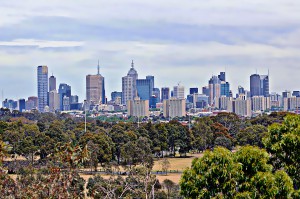Data released by SQM Research this week has revealed the national residential vacancy rate was unchanged at 2.1% in May 2018.
The number of vacancies Australia-wide sitting at 69,152 properties, though the vacancy rate inched higher in Sydney and Melbourne, while it fell in Brisbane for the fifth straight month.
Sydney’s vacancy rate rose to 2.5% in May, up from 2.3% in April, and higher than 1.7% a year earlier.

Key Points
- Nationally, the vacancy rate was steady at 2.1% in May.
- Hobart recorded the lowest vacancy rate of 0.7%.
- Perth recorded the highest vacancy rate of the capital cities at 4.1% in May, but that was down from 5.1% a year ago as the surplus of rental properties eases.
- Melbourne’s vacancy rate inched higher to 1.4% from 1.3%.
- Sydney’s vacancy rate rose to 2.5% from 2.3% and up from 1.7% a year earlier.
- Capital city asking rents for houses fell over the month to 12 June 2018 by 0.6% to $551 a week
Melbourne also saw its vacancy rate inch higher to 1.4%, up from 1.3% in April.
Canberra’s rate was steady at 0.8%, though down from 1.0% a year earlier. 
There was good news for property investors in Brisbane, where the vacancy rate fell to 2.9% in May, down from 3.0% in April and 3.5% in May 2017.
The decline in Brisbane represents the fifth straight monthly decline in rental vacancies.
Hobart’s vacancy rate was steady at 0.7%, but up from 0.5% a year ago.
Darwin’s vacancy rate rose to 3.5% from 3.3% in April.
Perth’s vacancy rate was steady at 4.1%, but down from 5.1% a year earlier as the oversupply of rental properties eases in that city.
Adelaide’s vacancy rate was also steady at 1.3%, but down from 1.7% a year ago.
Asking rents had eased in Sydney with greater supply of rental accommodation, giving some relief to home seekers.
There are considerably more vacancies in Sydney now compared to a year ago, so landlords have lowered their asking rents slightly, which is favouring renters.
Meanwhile, we have more evidence that the worse is over for Brisbane property investors with vacancies falling for five straight months and even the Brisbane CBD is now recording consistent decline in vacancies.
We believe that a rise in interstate migration is lifting population growth rates in Brisbane plus the peak in unit completions is creating this turnaround in the rental market.
Asking Rents
Capital city asking rents for houses fell over the month to 12 June 2018 by 0.5% to $551 a week.
Unit asking rents slipped 0.2% to $444 a week.
Over the year, asking house rents rose just 0.4%, while unit asking rents rose modestly by 0.9%. 
While the asking rent for a three-bedroom house in Sydney remains the highest in the nation at $715 a week, rents fell 1.6% over the month to June 12, with the upward trend in the vacancy rate easing pricing pressures.
Asking unit rents now stand at $523, down by 0.5% over the month.
Canberra is catching up to Sydney with housing asking rents now standing at $631 a week and $451 for units, after growth of 2.1% for houses and units over the month.
In Melbourne, asking rents for houses were down over the month to June 12 by 0.8% to $529 while unit asking rents rose by 0.5% to $412.
In line with the fall in vacancies, Brisbane rents registered a rise for the past 30 days with rents for houses rising by 0.8% to $450 a week and units rising by 0.4% to $369 a week.

Source: www.sqmresearch.com.au

No comments:
Post a Comment